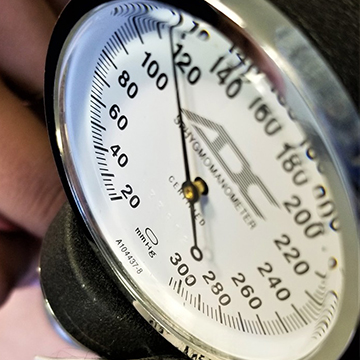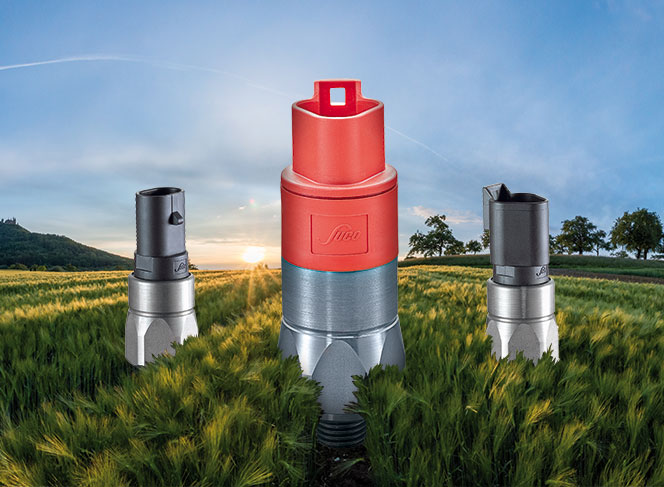Understanding the types of pressure switches available in today’s industrial marketplace is essential for engineers, maintenance professionals, and procurement specialists across North America’s manufacturing sector. With pressure monitoring critical to everything from aerospace hydraulic systems to hydrogen fuel applications, selecting the right switch type can mean the difference between reliable operation and catastrophic system failure. The various types of pressure switches each offer distinct advantages for specific applications, with advanced technologies like Silicon-on-Sapphire sensors revolutionizing extreme environment monitoring.
Pressure Switch Market Overview
The North American pressure switch market, valued at $1.7 billion in 2024, continues expanding at 6.8% annually through increased industrial automation and safety regulations. According to Markets and Markets research, manufacturing facilities across the US and Canada increasingly demand reliable pressure monitoring solutions that comply with stringent safety standards while providing long-term operational stability.
| Market Segment | 2024 Value | Growth Rate | Key Drivers |
|---|---|---|---|
| Industrial Automation | $680M | 8.2% | Industry 4.0 adoption |
| Oil & Gas | $425M | 5.4% | Shale production growth |
| Aerospace/Defense | $340M | 7.1% | Commercial space expansion |
| HVAC Systems | $255M | 4.9% | Building efficiency mandates |
Mechanical Pressure Switches
 Diaphragm Pressure Switches
Diaphragm Pressure Switches
Diaphragm pressure switchesrepresent the most common mechanical design among the different types of pressure switches, utilizing flexible metal or elastomer diaphragms that deflect under pressure changes. These switches excel in applications requiring simple on/off control with minimal maintenance requirements.
Key Characteristics:
- Operating ranges: 0.5 to 6,000 psi typical
- Temperature limits: -65°F to +400°F
- Response time: 50-200 milliseconds
- Accuracy: ±2% to ±5% of set point
- Electrical ratings: Up to 480VAC, 20A resistive loads
Applications include: HVAC system pressure monitoring, pump control and protection, air compressor automation, and low-pressure gas applications.
Advantages: Cost-effective, simple installation, no external power required, field-adjustable set points
Limitations: Limited accuracy compared to electronic alternatives, mechanical wear over time, sensitivity to vibration.
Piston-Type Pressure Switches
Piston pressure switches utilize balanced piston assemblies that move linearly with pressure changes, providing high-force switching capability for demanding electrical loads.
Snap Action Pressure Switches
- Feature a mechanism that snaps between two states once a specific pressure threshold is reached.
- Frequently used for safety and control applications.
Bourdon Tube Switches
Bourdon tube pressure switches employ curved metal tubes that straighten under internal pressure, activating mechanical switch contacts through linkage systems. These robust switches handle extreme pressures while maintaining mechanical simplicity.
Industrial Applications: High-pressure hydraulic systems, steam boiler monitoring, industrial gas applications, mobile equipment hydraulics
Electronic Pressure Switches
 Piezoresistive Technology
Piezoresistive Technology
Piezoresistive pressure switches dominate electronic applications through proven silicon sensor technology offering excellent accuracy and digital communication capabilities among the various types of pressure switches.
Performance Specifications:
- Accuracy: ±0.25% to ±0.5% full scale
- Operating temperature: -40°F to +185°F
- Response time: <10 milliseconds
- Output signals: 4-20mA, 0-10VDC, digital protocols
- Pressure ranges: Vacuum to 10,000+ psi
Advanced Features: Programmable switching points, multiple output configurations, built-in diagnostics, Bluetooth/WiFi connectivity options.
Silicon-on-Sapphire (SoS) Technology
Silicon-on-Sapphire pressure switches represent the premium tier of electronic sensing, offering unmatched stability and performance in extreme environments. SUCO ESI’s proprietary SoS technology addresses critical limitations of conventional sensors through advanced materials science.
Superior Performance Metrics:
- Long-term stability: <0.2% over 10+ years
- Temperature compensation: -40°C to +200°C
- Accuracy: ±0.1% full scale achievable
- Pressure capability: Up to 72,500 psi
- Zero hysteresis: <0.02% typical
Technical Advantages: Molecular bonding eliminates adhesive degradation, sapphire substrate provides chemical inertness, thermal stability reduces compensation requirements, mechanical strength (Mohs hardness 9) prevents damage.
Critical Applications: Aerospace engine monitoring, hydrogen fuel systems, downhole oil & gas monitoring, pharmaceutical cleanroom applications
Capacitive Technology
Capacitive pressure switches excel in applications requiring high accuracy with minimal temperature sensitivity, particularly in clean environments.
Key Benefits: Excellent linearity over wide ranges, minimal temperature drift, low power consumption, high resolution capability.
Application-Specific Switch Types
 Differential Pressure Switches
Differential Pressure Switches
Differential pressure switches monitor pressure differences between two points, essential for filter monitoring, flow verification, and HVAC system control.
Common Applications: Filter status monitoring, fan performance verification, clean room pressure maintenance, heat exchanger monitoring.
Vacuum Switches
Vacuum pressure switches handle sub-atmospheric pressures in specialized applications requiring precise vacuum level control.
Technical Requirements:
- Measurement ranges: 30″ Hg to micron levels
- Seal integrity critical for accuracy
- Materials must resist outgassing
- Temperature stability essential
High-Pressure Switches
High-pressure switches address extreme pressure applications in oil & gas, aerospace, and industrial hydraulics where standard types of pressure switches cannot operate. The SUCO ESI HP1000 series exemplifies high-pressure capabilities.
Design Features:
- Pressure ratings: 10,000 to 100,000+ psi
- Specialized materials: Inconel, Hastelloy
- Compact designs for space constraints
- Safety certifications: ATEX, IECEx
For expert guidance on selecting the optimal pressure switch technology for your application,
contact SUCO ESI North America’s engineering team – sales@sucoesi.com or Call Today 1-800-473-7313
Regional Standards and Certifications
North American Standards
UL/CSA Certifications ensure electrical safety compliance across US and Canadian markets. The International Society of Automation (ISA) provides comprehensive standards for industrial control equipment.
- UL 508: Industrial control equipment
- CSA C22.2: Canadian electrical safety
- NEMA 4X: Corrosion-resistant enclosures
- IP ratings: International protection standards
International Compliance
European Certifications enable global market access. The ATEX directive governs explosive atmosphere equipment safety.
- ATEX Directive 2014/34/EU: Explosive atmosphere protection
- IECEx: International explosive atmosphere certification
- CE marking: European conformity requirements
- DNV GL: Marine and offshore applications
Selection Criteria Matrix
| Application Factor | Mechanical Switches | Electronic Switches | SoS Technology |
|---|---|---|---|
| Initial Cost | ✅ Low | ⚠️ Medium | ❌ High |
| Accuracy | ⚠️ ±2-5% | ✅ ±0.25% | ✅ ±0.1% |
| Environmental Range | ⚠️ Limited | ✅ Good | ✅ Extreme |
| Maintenance | ⚠️ Periodic | ✅ Minimal | ✅ None |
| Digital Integration | ❌ None | ✅ Excellent | ✅ Advanced |
| Long-term Stability | ⚠️ Drift | ✅ Good | ✅ Exceptional |
🛠️ Installation and Maintenance Best Practices
Mechanical Switch Installation
Proper mounting orientation prevents premature wear:
- Orient sensing element away from vibration sources
- Provide adequate clearance for adjustment access
- Use appropriate thread sealants for media compatibility
- Install pressure snubbers for pulsating applications
Electronic Switch Considerations
Environmental protection ensures reliable operation:
- IP65+ enclosures for outdoor installations
- Temperature derating for extreme conditions
- EMI shielding in electrically noisy environments
- Surge protection for lightning-prone areas
Calibration and Maintenance Schedules
| Switch Type | Calibration Frequency | Typical Maintenance |
|---|---|---|
| Mechanical | 12-24 months | Contact cleaning, adjustment verification |
| Electronic | 12-36 months | Zero/span verification, connector inspection |
| Silicon-on-Sapphire | 36-60 months | Minimal – connection verification only |
Industry Trends and Future Developments
IoT Integration and Smart Switches
Connected pressure switches enable predictive maintenance through continuous monitoring and data analytics. Modern switches incorporate wireless communication via LoRaWAN, WiFi, cellular, edge computing for local decision making, cloud connectivity for enterprise-wide monitoring, and machine learning algorithms for fault prediction.
Sustainable Manufacturing Focus
Environmental considerations increasingly influence switch selection: lead-free electronics compliance, RoHS material restrictions, energy-efficient operation, and end-of-life recycling programs.
Hydrogen Economy Applications
Hydrogen-compatible switches address the growing fuel cell vehicle and industrial hydrogen markets with specialized materials that resist hydrogen embrittlement, enhanced safety certifications for explosive atmospheres, extended operational life requirements, and integration with hydrogen fuel systems.
Cost-Benefit Analysis
Long-term economic evaluation should consider initial investment (purchase price varies 3-10x across technologies), installation and commissioning costs, training requirements for maintenance staff, and operational costs including calibration frequency, replacement part availability, downtime costs during maintenance, and energy consumption for electronic types.
Risk Mitigation benefits include: Process safety improvements, reduced insurance premiums, regulatory compliance assurance, and avoided catastrophic failure costs.
Choosing the Right Partner
Direct manufacturer benefits include technical support from engineering teams, customization capabilities for unique applications, faster response times for urgent requirements, and long-term product lifecycle support.
Post-purchase support requirements: Technical documentation quality, training programs for maintenance staff, spare parts availability and lead times, emergency support responsiveness, and warranty terms and service options.
📋 Frequently Asked Questions
What’s the difference between pressure switches and pressure transmitters?
Pressure switches provide discrete on/off signals at predetermined pressure levels, while pressure transmitters output continuous analog or digital signals proportional to pressure. Switches cost less but provide limited information compared to transmitters’ continuous monitoring capability.
How do I determine the right pressure range for my application?
Size the switch range to operate at 60-70% of full scale during normal conditions. This provides adequate margin for pressure variations while maintaining optimal accuracy. For example, if normal operating pressure is 100 psi, select a switch with 150-175 psi range.
Can pressure switches handle pulsating applications?
Pulsating pressure can cause premature switch wear or false triggering. Solutions include installing pressure snubbers, using switches with differential gaps, or selecting electronic switches with programmable delay timers. Mechanical switches may require more frequent maintenance in pulsating applications.
What maintenance do electronic pressure switches require?
Electronic switches need minimal maintenance: periodic calibration verification (12-36 months), electrical connection inspection, and cleaning of sensing ports. Unlike mechanical switches, electronic types have no wearing contacts or adjustable mechanisms requiring service.
How do environmental conditions affect switch selection?
Temperature extremes may require switches with extended operating ranges or temperature compensation. Corrosive environments demand compatible materials like 316 stainless steel or specialized alloys. Vibration favors electronic switches without mechanical contacts that can wear or chatter.
Taking the Next Step
Understanding the types of pressure switches available empowers you to make informed decisions that optimize system performance while minimizing long-term costs. Whether you need basic mechanical switches for simple applications or advanced Silicon-on-Sapphire technology for extreme environments, the right selection depends on carefully evaluating your specific requirements against available technologies.
For expert guidance on selecting the optimal pressure switch technology for your application,
contact SUCO ESI North America’s engineering team – sales@sucoesi.com or Call Today 1-800-473-7313

